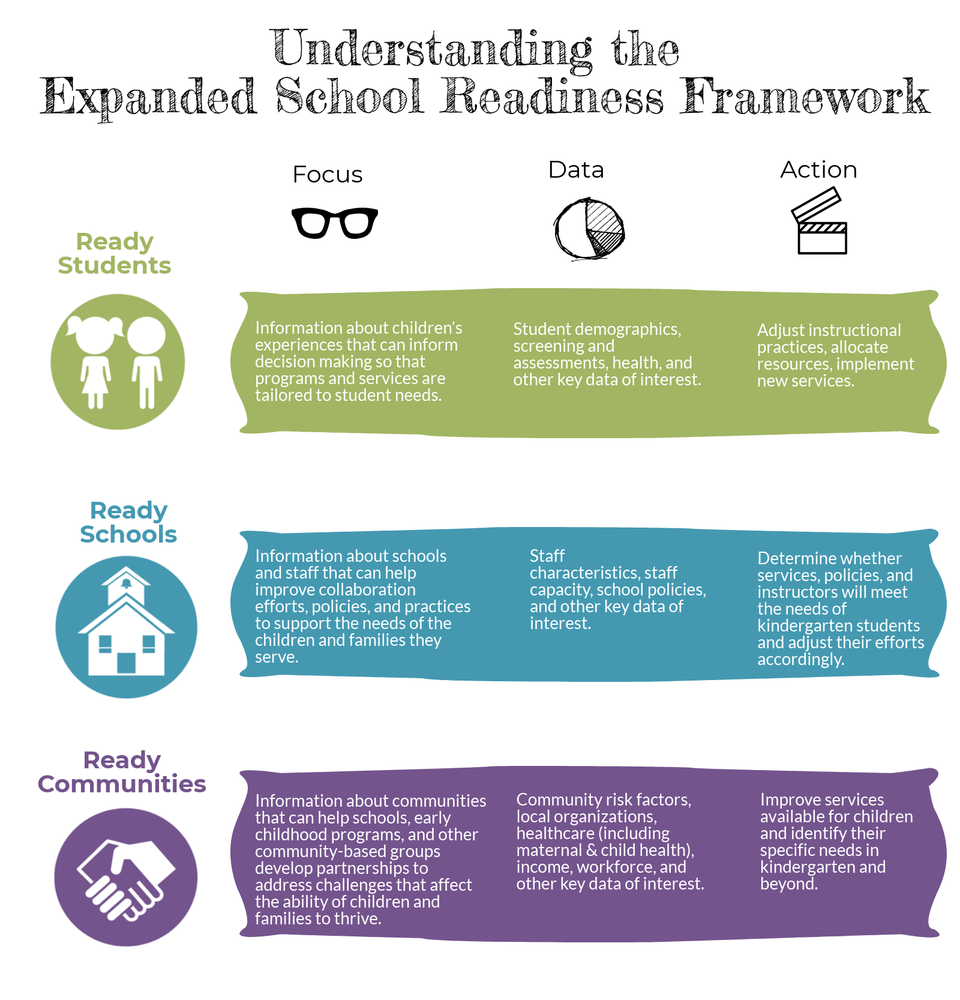Many in the field associate school readiness with its traditional definition, which is how prepared children are to enter and succeed in school. The factors that determine a child’s level of school readiness vary by state, framework, or program but typically include early math skills, social and emotional development, language and literacy, cognitive abilities, approaches to learning, and health and physical development. All states have determined the skills that children should develop by the time they enter kindergarten.
Some states have expanded their definition of school readiness beyond traditional, child-focused reporting. These states look at not only whether the child is ready for school, but also whether schools and communities are ready to support the children. Children come to school with their own unique needs, shaped by their early experiences. To support the success of all children and families, schools and communities need to be able to address these many needs.
Child-ready schools and communities are not necessarily new. However, determining a process to collect, integrate, and report data to inform child-ready communities and schools is relatively new and not yet operationalized. Most states and programs are not yet “ready” to report on this expanded way of thinking about school readiness. So, we are here to help.
To provide a holistic picture of school readiness, it is useful to include and integrate data from multiple sources. ECDataWorks recommends incorporating data on ready students, ready schools, and ready communities.

The information above was developed based on the School Readiness Reporting Guide: Guidelines and Tools for Creating and Using School Readiness Reports. View the full resource for more information on this topic, including four use cases that demonstrate how to visualize and take action from integrated school readiness data.
We tend to think about child care as a family issue and a business issue. Four decades ago, the fact is that child care became a “military readiness” issue when the draft was eliminated in favor of an all-volunteer force. With the resulting influx of families and children, child care was needed to reduce the conflict between military mission requirements and parental responsibilities.
Yes, it is important to go to your office or cubicle and perform the day-to-day routines of collecting data, reporting federal and state data, and running ad-hoc data requests.
This post was co-authored by Ruth Lett and Nancy Copa.